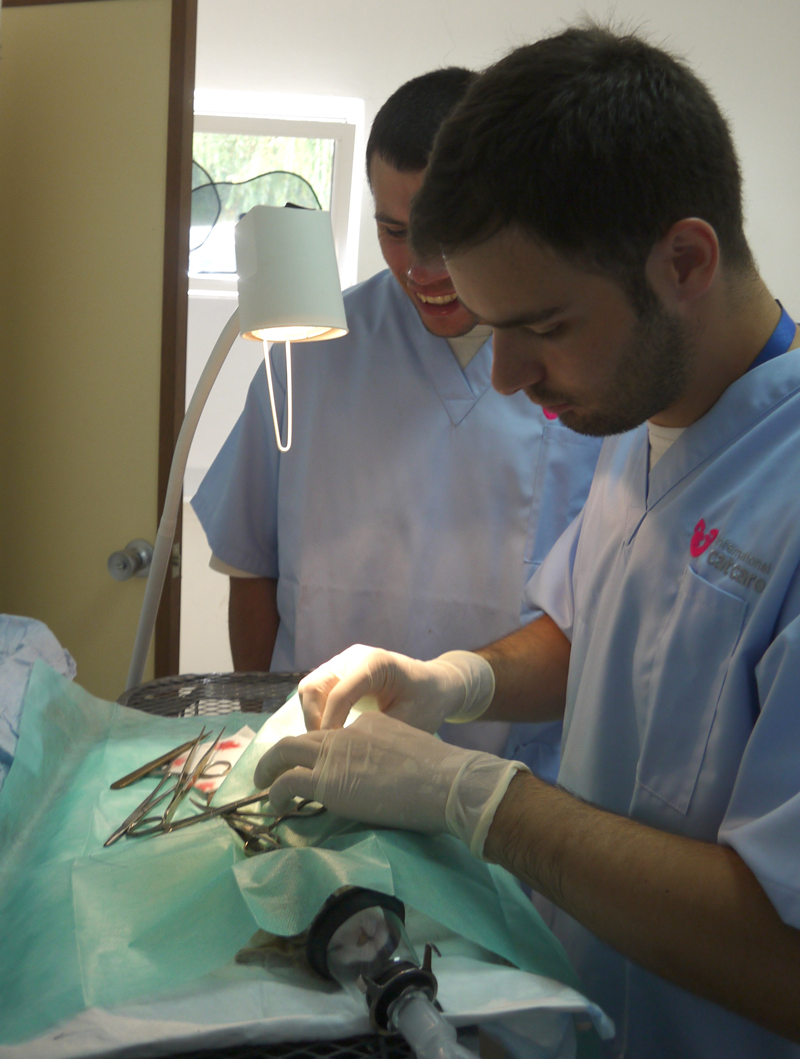TNR: What to consider
Questions you need to consider before you TNR
Rushing in alone to do TNR without the right support, equipment, knowledge and plan can cause significant problems for both you and the cats. You need to have an idea of the bigger picture and the environment you will be operating in.
Are there any legal concerns?
- What is the legal position regarding cats in your particular country or region? Can you legally intervene?
- Is there any infrastructure in the form of government or animal organisations already addressing the issue and are they aware of the problem?
- Is there a local/national authority involved in developing solutions such as legislation and animal control systems?
- Are there laws concerning trapping/neutering and the ownership/responsibility for unowned cats?
- Who ‘owns’ the cats and the land? Is there someone who you need to seek permission from to trap?
What do you know about the cats in the area?
- Are you dealing with a small local population or the wider population in a city or country?
- Why is the cat population there and what impact is this having on people, cats and wildlife?
- Do you have evidence to support that cats are a problem and intervention is needed?
- Are all the cats in the area unowned or do people consider them to be pets (even if others do not)?
- Are there just feral and street/community cats or are there stray and abandoned pet cats too? Are there pet cats in the area? Do you have a plan for what you will do with each type?
Will TNR solve the problems being caused by the cats and meet expectations?
- Are cats impacting on a particularly rare or fragile ecosystem and so cannot remain in their current location?
- Is the cats’ welfare poor because of infectious or genetic diseases?
- Is the site being developed and so cats cannot be returned?
- Is the problem the nuisance caused by noise, smell or concerns about hygiene and disease?
- Is the problem with waste from the cats in areas where it may cause problems for human health (for example, where water is collected)? In this case return of cats (even if neutered) will not solve the problem.

Waste from cats that congregate on roofs can contaminate rainwater that may be an important source of water for the local community
| Useful resource: |
What is the community attitude towards the cats?
- Is the community’s attitude towards cats generally positive or negative and how does this impact on population control plans? High levels of negativity from a significant proportion of the community will reduce the effectiveness of TNR programmes and may lead to poor welfare outcomes for cats even if they are neutered. Without the involvement and cooperation of local people, you will not be successful
- Are there cultural or religious beliefs that may influence people’s responses?
- Are there other factors that the community values? It may be helpful to capture this information via questionnaires or discussions before and after trapping. This can help you to measure success from their point of view, for example, there may have been concerns about cats fighting and making a noise at night and this problem may have been solved.
| Useful resource:
In October 2014, Change for Animals Foundation alongside local partners Animais de Rua, began their TNR programme. The planning involved extensive research to fully understand the size, dynamics and health of the local cat population. They also engaged with the community to understand their attitudes and behaviour before they started. |
Do you have the skills needed, either personally or in your team?
- Can you communicate well with others and get them to work with you?
- Are you organised?
- Do you have enough knowledge about cats to make sure their wellbeing is never compromised?
- Can you talk to veterinarians about what you need from them?
- Are you prepared for some of the more distressing aspects of the work – dealing with very sick or badly injured cats, or angry and abusive people?
- Can you be confident to make pragmatic, humane decisions for the cats concerned? There will be some circumstances (illness or nowhere else for the cats to go) when the only solution is to trap and humanely euthanise colonies of cats. Well planned euthanasia that is centred around cat welfare is preferable to the use of inhumane methods such as poisoning, but it may be upsetting for you and others to make those decisions
- Do you have an endless supply of patience as you may need to spend hours, days and even weeks trapping a colony of cats? You may also have to explain to people what you are doing, many times over
- If the answer is ‘no’ to any of the above, (and it would be virtually impossible for one person to have all these skills) then make sure you find other people and resources that can support you in these areas. You will also then be able to work as a team with all the benefits this entails
Are there other factors to consider?
- Is there a free-roaming dog population which is being controlled? Dogs may predate on cats or compete more effectively for resources such as space, food etc. Cats may hide more if dogs are around. If there are plans in your area to manage the dog population then it is worthwhile working with the relevant organisations to introduce cat population management at the same time or immediately after
- Are you aware that other species (wild or pet, attracted by the cat food) may be trapped too?
| Do the best you can
You may be reading some of the content on this page and thinking ‘I can’t do that’ or ‘I wish it was that simple!’ We know that life is complicated and when you are dealing with cats (and people) nothing is black and white. Following Cat Friendly principles are all about doing the very best you can under difficult circumstances. So, if you read something and think ‘impossible!’ then maybe consider what you could do instead that would have a positive impact. We know we cannot achieve perfection as it isn’t a perfect world. Be pragmatic and be satisfied with ‘good enough’ when the ideal seems impossible. People who trap and those who care for community cats work very hard and can be susceptible to ‘burnout’ and compassion fatigue, see the attached paper Exploring Empathy, Compassion Fatigue, and Burnout among Feral Cat Caregivers. It is helpful to those doing the work to have a network of people who can support each other and cover for sickness and holidays. |
Do you have knowledgeable veterinarians to work with?
- Will you be using veterinarians in a large charity hospital? If not, those you use will be running their own business and you will need to respect this when asking for discounted rates and arranging time for neutering. Veterinarians play an essential role in your TNR project, so good working relationships are necessary
- Do they understand the issues around dealing with feral cats and have the equipment and know-how to do so?
- Will they need additional equipment or to introduce different anaesthetic protocols?
- Are there issues with infection control and potential disease transfer to/from their clients’ pets?
- You will need to agree the process of TNR with the veterinarians and gain their support in key areas, such as early neutering*, pregnant spays, testing (eg FIV/FeLV), euthanasia and understanding the need to adopt a different approach to clinical decisions for unowned cats (see working with your veterinary partners)
- Can you collaborate with the veterinarians on practical issues such as drop-off and pick-up flexibility or using a different entrance to pet cat clients?
- Can you discuss bringing in additional veterinary resources occasionally if there are only one or two vets in the practice?
*Early neutering of kittens
|

Veterinarians neutering street cats
| RSPCA Australia published a research report in June 2021 on pre-pubertal de-sexing in cats, concluding that neutering both male and female kittens before puberty, usually at 8–12 weeks of age is justified, practical and has many benefits. Read the report here.. |
Do you know what you are going to do with the cats?
Any plan that involves trapping followed by long-term confinement is a negative intervention that will lead to poor physical and mental outcomes for the cats involved?
- Can the cats be returned to site after neutering? If not, then you should think carefully before intervening. Do you have alternative sites? Will you take responsibility for trapping and euthanising the cats if you think they may otherwise be killed by inhumane methods?
- If you plan to relocate them, how will you do this? It is better to relocate quickly in small groups than wait for a large site to become available that can accommodate the entire colony. Any new location must also be far enough away to avoid cats returning to the original site unless it is accepted that some of the cats may return
Do you have policies and procedures in place, so everyone knows what approach you are taking?
It is easier to have policy discussions in the abstract before it pertains to a specific cat because then emotions can get in the way of logical thought and decision-making
- Are you planning to establish policies and procedures? Everyone must be clear about welfare outcomes and the use of scarce resources. In most cases funds are limited and choices need to be made about using them for the benefit of as many cats as possible
Do you have a system for recording information?
- Will your records be on paper or on a computer? You will need to record details of people involved, properties and all the cats: their age, sex, colour and any treatments and whether they were returned to site, euthanised, released to an alternative site or, if they have previously been pet cats, to be homed as pets
- Can you show how funds have been used?
- Do you need to meet the requirements of any legislation for protecting personal data?
Have you considered the need for insurance cover?
- Do you need public liability insurance?
- What if someone was injured by your traps or one of your staff or volunteers comes to harm when trapping?
Can you provide management of the colony or small groups of cats after TNR?
Have you considered the ongoing care and supervision of the colony? See Management after TNR
Can you afford to do TNR?
Do you have the funds to cover the cost of equipment, veterinary fees, insurance, a vehicle, other related fees? Funds can be raised potentially by the affected community, or via other charities, NGOs, government, grants etc.
Are there others you could work with?
Could you collaborate with other like-minded individuals, groups or charities (if you work on your own you may have to accept you cannot make a big impact on the population)? This can save time and resources and bring invaluable expertise and experience. There may be a group that works with another species, for example, dogs, which can provide advice and support.
Policy Statement on the Timing of NeuteringCreated by The Cat Group, a collection of professional organisations in the UK dedicated to feline welfare through the development and promotion of policies and recommendations on the care and keeping of all cats. |


